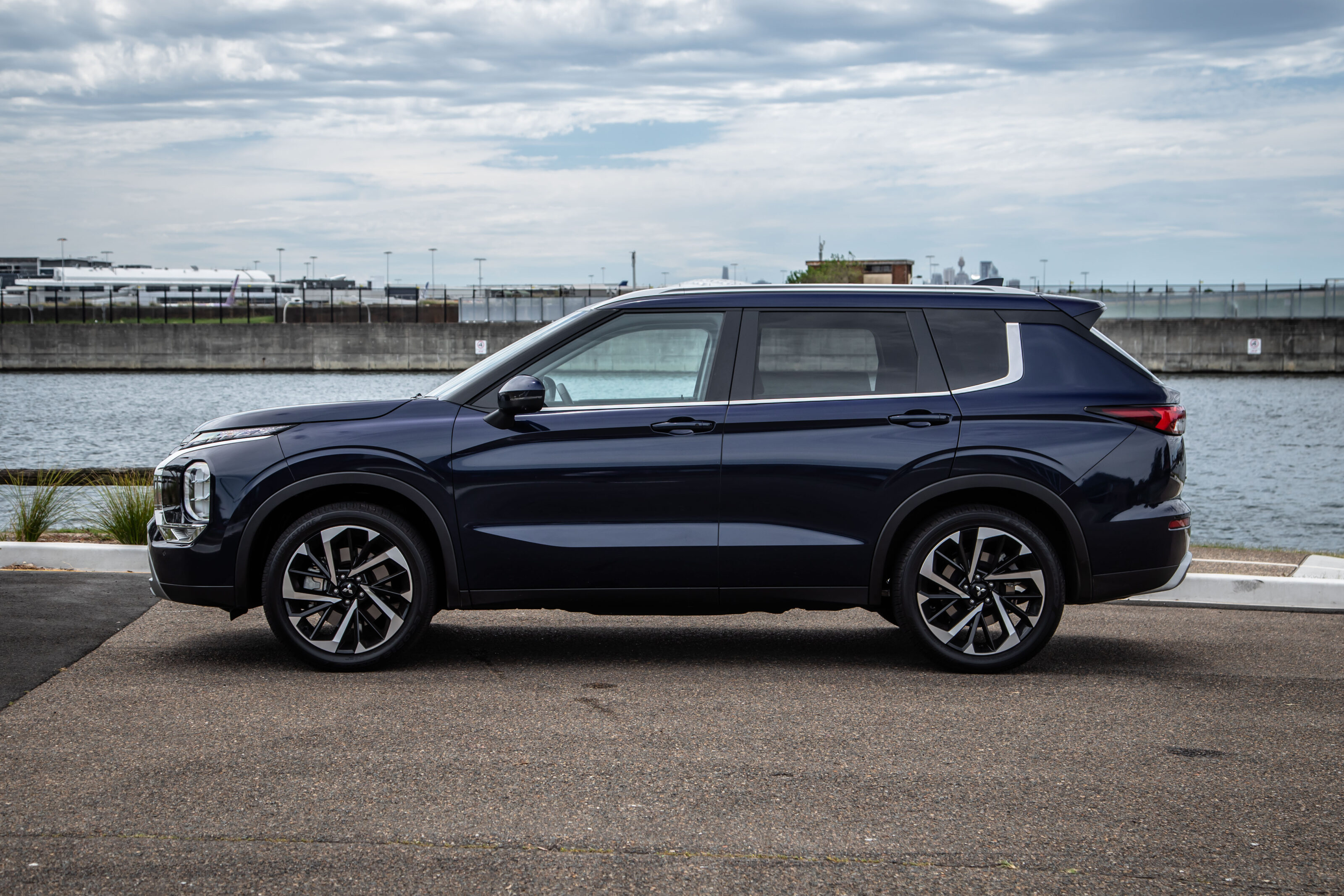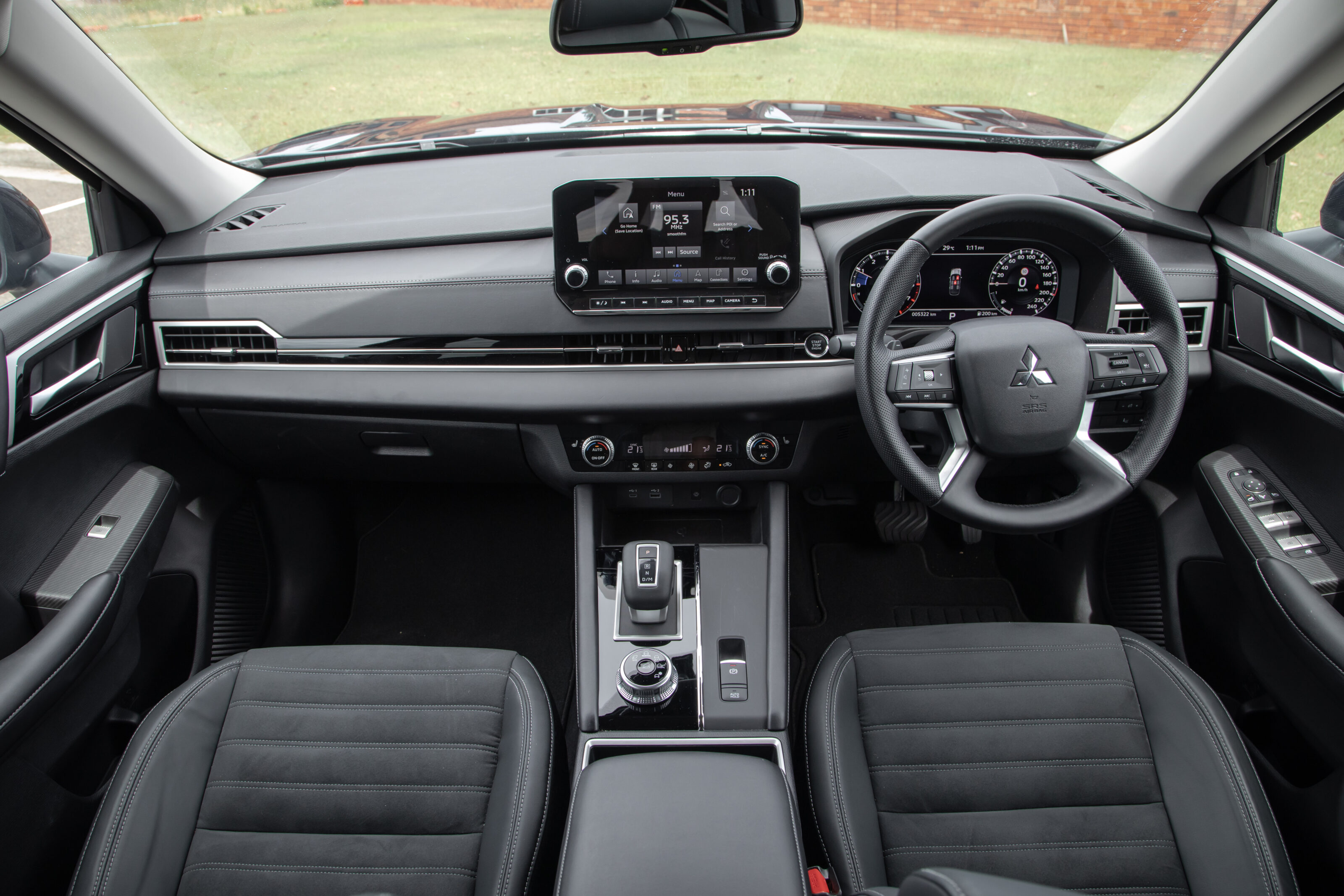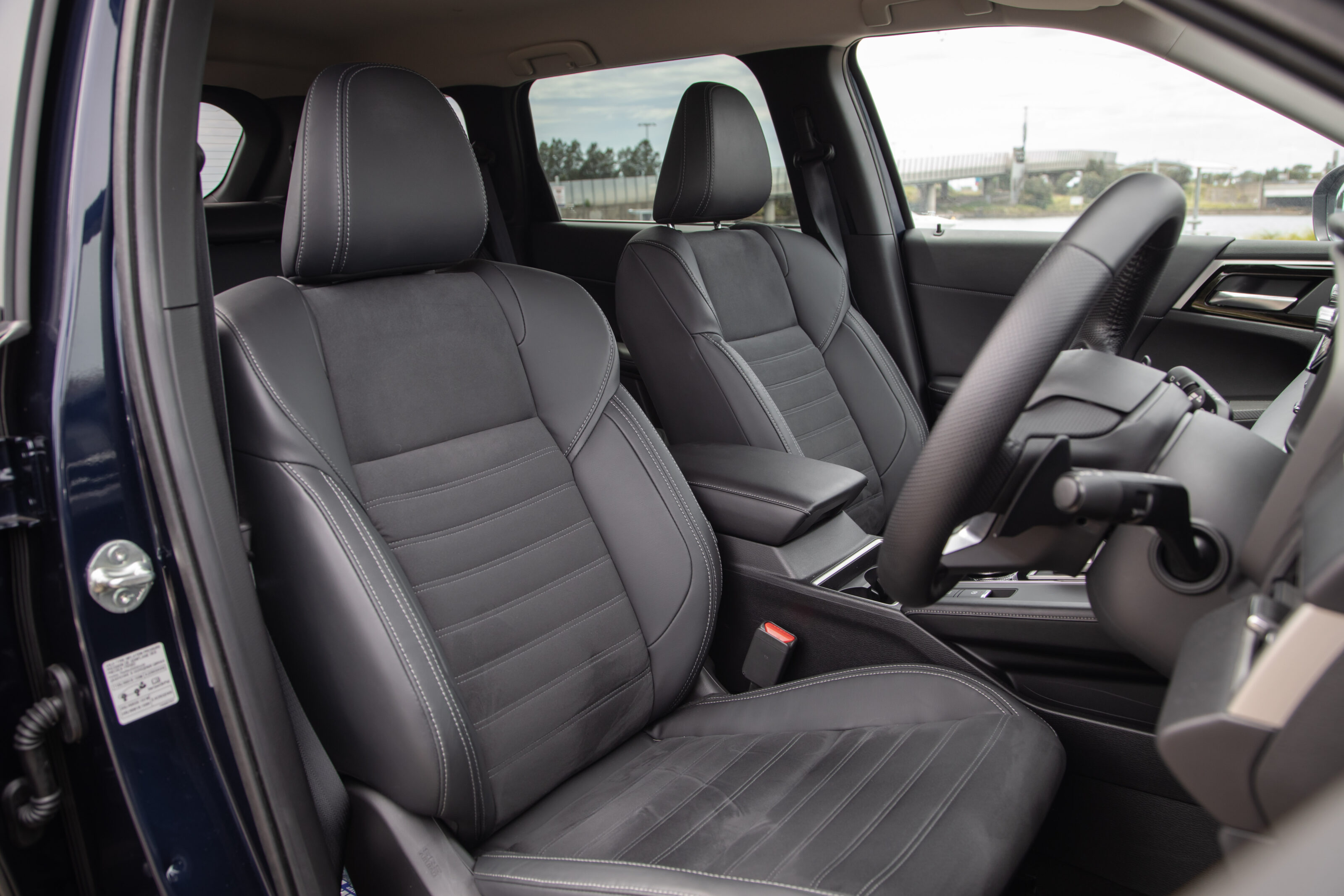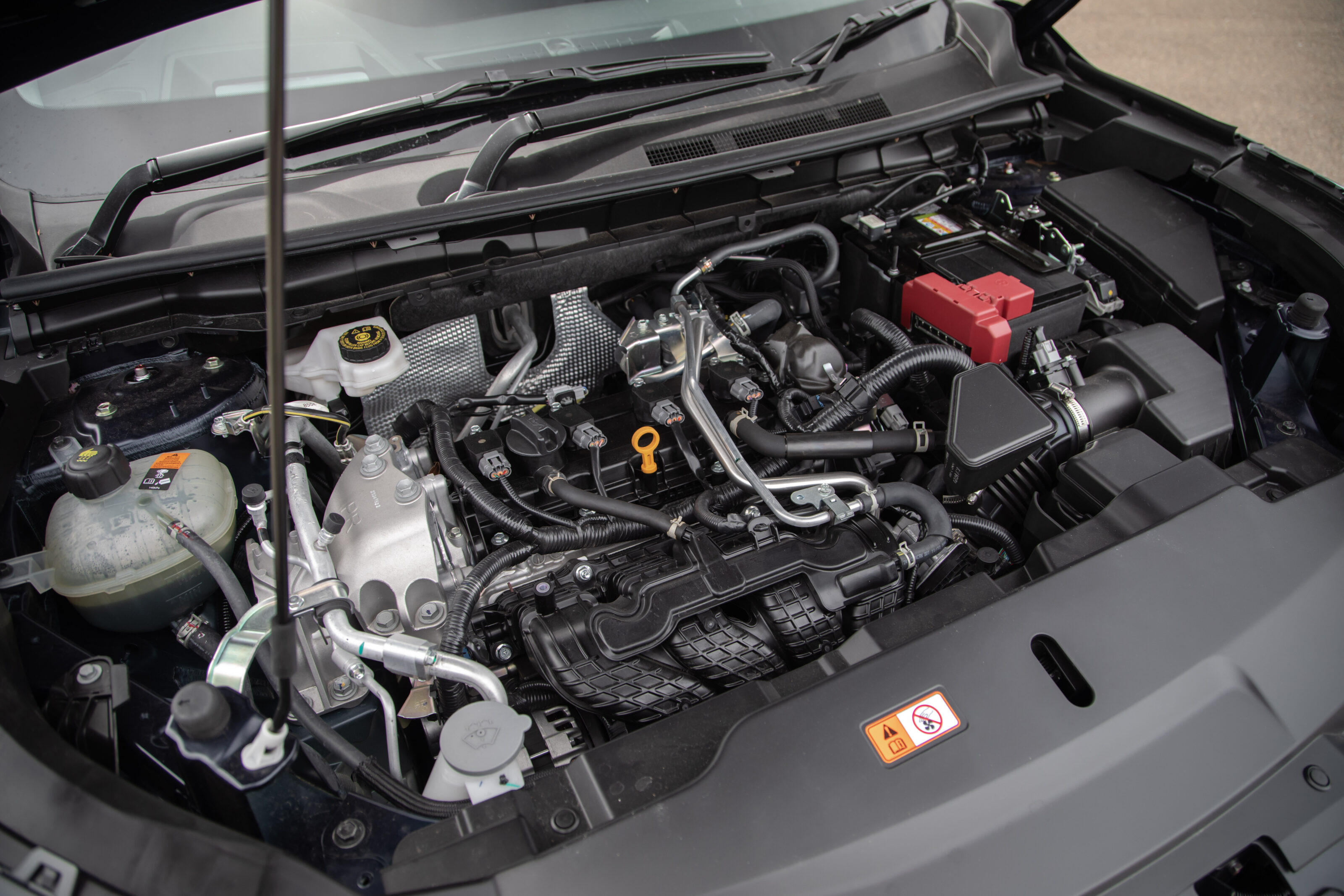Score breakdown
Things we like
- Fantastic interior
- Comfortable
- Well-equipped
Not so much
- Near-useless third-row seating
- Lazy body control
- Squishy brake pedal
Mitsubishi’s 2022 Outlander significantly raised the bar for the brand when it was released late in 2021.
The old seven-seater was the flagship of the company’s range, selling at a rate of knots despite ageing hardware and a very ordinary driving experience.
It helped that it was cheap and, for a good part of its existence, just plain better than its obvious competition, the risible Holden Captiva. The better seven-seaters were bigger and significantly more expensive, so good value and a seemingly endless series of facelifts kept it going for a decade. And, to be fair, the plug-in hybrid was quite good.
We’ve covered the new Outlander in its flagship Exceed as part of our garage fleet, and the Aspire AWD featured in a comparison earlier this year where we suggested it was the sweet-spot of the range based on price and spec.
But is it worth saving $2500 with the FWD Aspire we have here?
UPDATE: Outlander Range Review
Looking for more detail on the wider Outlander line-up? See our full Outlander range review at the link below!
Pricing and Features
What do you get for your spend?
A quick disclaimer before we go on. Due to the world being on fire/flooded/flooded and on fire for the best part of three years now, the MY22.5 Outlanders are going to be slightly less, shall we say, feature-rich owing specifically to the dearth of semiconductors.
Some Outlanders are harder-hit than others; the third-from-top-spec Aspire will only lose the digital dashboard but won’t share the price increases of the Exceed and Exceed Tourer. The car I had for the week was an MY22 so still had the digital dashboard but that’s the worst of it.

The Aspire’s $41,490 plus on-road costs (or $2500 more for one with all-wheel drive) gets you 20-inch alloy wheels, dual-zone climate control, front and rear parking sensors, adaptive cruise control, reversing camera, leather steering wheel and shifter trim, power tailgate with kicky-foot gesture control, heated and folding door mirrors.
There’s also auto headlights with automatic high beam, 12.3-inch fully digital dashboard (not available on the MY22.5), 10.8-inch head-up display, combination fake suede and fake leather interior, power driver’s seat adjustment, heated front seats, silver roof rails, LED fog lamps, auto wipers and a space-saver spare.

Due to the world being in chaos, the MY22.5 Outlanders are going to be slightly less feature-rich, owing specifically to the dearth of semiconductors
Mitsubishi’s fairly ordinary media system appears on a 9.0-inch touchscreen but does have wireless Apple CarPlay and USB Android Auto. The touchscreen hardware is good – snappy, big and easy to look at. The basic software looks super old and blocky and could do with either being junked altogether in favour of Android Automotive or having some real money spent on it to make it look modern.
The Outlander’s five-star ANCAP rating, awarded in January 2022, comes courtesy of eight airbags, including a driver’s knee bag and a front centre airbag (to prevent head clashes in a side impact), the expected braking and stability controls, forward auto emergency braking (AEB), forward collision warning, reverse AEB, reverse cross-traffic alert, lane departure warning, lane-keep assist and speed sign recognition.

Its forward AEB system works at high and low speeds and features pedestrian avoidance.
There are seven available colours – white, sterling silver, titanium, cosmic blue, white diamond, black diamond and red diamond. White is free, metallic and pearlescent paints are another $740 and prestige paint (anything with ‘diamond’ in the name) is $940.
Comfort and Space

This new Outlander is a much bigger beast than the old, narrow, constrained Outlander. Perversely, it’s a much less comfortable seven-seater but vastly more comfortable and spacious as a five-seater. Mitsubishi probably saw this criticism coming and calls the Outlander a “5+2”, meaning they know that we know that the third row is now nearly unusable. Most 2+2s have virtually unusable second rows, so the approach checks out.
First, the good stuff – this is a terrific cabin. Lots of much better materials, comfortable seats, some interesting textures and design features and lots more thoughtful touches. The front seats are extremely comfortable and the driving position is excellent while also having plenty of adjustment. The Aspire feels more spacious than the more expensive Exceed variants because the sunroof isn’t there eating headroom.

That translates to a more useful second row than both the old car and the current Exceed. The rear seats do sit fairly high so that extra head space means six-footers will be much happier back there. On top of that, there are rear air vents, one of my favourite things. The doors are big, too, so it’s easy to get people, including babies in capsules, in and out.
Front and middle rows each have two cup holders and a bottle holder in each door. The cup holders in the rear are ridiculous – there is no armrest so you have to fold down the central section of the 40:20:40 split-fold seat to access them.
This is a terrific cabin. Lots of much better materials, comfortable seats, some interesting textures and design features and lots more thoughtful touches

The boot is a reasonable 478 litres, which is good for the segment but then this is a significantly larger car than most of its rivals. With the seats folded, you have 1461 litres to play with. If you go for the base-spec car, you only get another seven litres of capacity in exchange for losing the third row of seating.
As is well-documented, that third row is close to useless. The seats aren’t very comfortable, with low backrests and silly detachable headrests that live under the boot floor but you always forget to remove them so they’re in the way. You have almost no legroom with the sliding centre row in its rearmost position but moving it doesn’t improve things to the point of regular usability. It’s almost like the company just wanted to hang on to its mid-size seven-seater crown without thinking who might actually fit. Even the Mazda CX-8 has a better third row, if only just.
On the Road

Possibly the most disappointing thing about the new car is the tired old drivetrain. As I will always say, however, nobody in this segment really cares much about what’s under the bonnet because if they did, we wouldn’t have a bunch of naturally-aspirated engines between two and two-and-a-half litres dominating the engine bays of mid-sized SUVs.
Anyway, Mitsubishi has seen fit to make the old 2.4-litre four-cylinder slightly bigger to 2.5-litres, stick with the automatic continuously variable transmission (CVT) and, in the AWD versions, send power to the wheels via the dubiously motorsport-connected S-AWC system.
The front-wheel driver tested here obviously misses out on the S-AWC, but in most conditions, you won’t miss it. If you fancy taking the Outlander off-road, spring for the AWD.

A PHEV is on the way and that is admittedly a much more interesting driveline but it will be fascinating to see if it brings the kind of amazement and amusement it did in the old car given how incongruous it was.
The 2.5 musters 135kW at 6000rpm and a fairly modest 245Nm at 3600rpm but at least the CVT is the right transmission to make the most of those figures, including the 1760kg kerb weight, a hefty jump of 200kg on the old car.
You do feel that weight, but not so much in the way the engine pulls it along. The Outlander was never an especially fast car but the CVT is an improvement over the previous version and I rarely felt the need to pull a fake gear with the plastic paddles.
Most of the time it’s fine, plush even. There’s a clear bias towards comfort, so cornering brings body roll and braking yields a reasonable amount of pitching

Like the Exceed, the choice of 20-inch alloys is a solid design choice but they may not help the ride too much. Most of the time it’s fine, plush even. There’s a clear bias towards comfort, so cornering brings body roll and the squishy brake pedal a reasonably amount of pitching. Certainly not in an “I’m gonna be sick” way, but definitely reminiscent of its Nissan cousins.
The Outlander on 20s does not like surfaces such as the concrete panels found around Sydney or unven tarmac. In these conditions, the ride gets a bit cranky, which is weird given its general softness.
Its tyres, while big, are full-on “eco” spec (hard for long life and with low rolling resistance) and are noisy around corners. My wife, who is not a hoon, got plenty of faint but unwelcome squealing around roundabouts.
Another surprising improvement – and one that puzzles me given the engine isn’t exactly the last word in technology – I got a repeat of the Exceed’s real-world 8.4L/100km figure from a few weeks ago, well within shouting distance of the combined-cycle number of 8.1L/100km. A comforting relief in these $2 per litre times.
Ownership

Mitsubishi offers a generous – if a bit terms-and-conditions-apply-ey – 10-year/200,000km warranty. If you, like most Australians, cover fewer than 20,000km per year, you’re going to love this warranty, especially if you keep the car for such a long time. You do have to service each time at a Mitsubishi dealer and if you don’t, kiss goodbye to ten years and say hello to five years/unlimited km, which is still alright, really.
The servicing is pretty cheap most of the time, costing just $199 for seven of the 10 services in the fixed-price regime. Service six is $499 and service 10 is $799, neither of which reach the heights of, say, the Tiguan Allspace. You need to return to the dealer every 12 months or 15,000km.
VERDICT

The new Outlander is worthy of a test-drive, and we still think the Aspire is the pick of the range.
The Exceed’s extras don’t really help (unless you really need the digital dashboard that used to be in the Aspire), especially given the headroom-munching sunroof.
There’s really nothing amazing about the Exceed that isn’t in the lower model and you’ll save decent coin if you’re willing to go without a third zone in your climate control, a couple more speakers and some leather.
It’s the buyer’s call on whether all-wheel drive is worth the extra spend.
2022 Mitsubishi Outlander Aspire FWD specifications
| Body | 5-door, 7-seat medium SUV |
|---|---|
| Drive | front-wheel |
| Engine | 2488cc naturally-aspirated four-cylinder |
| Gearbox | continuously variable transmission |
| Power | 135kW @ 6000rpm |
| Torque | 245Nm @ 3600rpm |
| 0-100km/h | 10.5 secs (claimed) |
| Bore/stroke (mm) | 89 x 100.0 |
| Compression ratio | 12.0:1 |
| Fuel consumption | 8.1L/100km (claimed) |
| Front suspension | struts, coil springs, anti-roll bar |
| Rear suspension | multi-link, coil springs, anti-roll bar |
| L/W/H | 4710mm/1862mm/1745mm |
| Wheelbase | 2706mm |
| Towing | 1600kg (braked) |
| Front brakes | 350mm ventilated discs, single-piston calipers |
| Rear brakes | 330mm solid discs, single-piston calipers |
| Tyres | 255/45 R20 101W Bridgestone Ecopia |
| Wheels | 20 x 8.0-inch alloys |
| Price | $41,490 + on-road costs |
Score breakdown
Things we like
- Fantastic interior
- Comfortable
- Well-equipped
Not so much
- Near-useless third-row seating
- Lazy body control
- Squishy brake pedal






